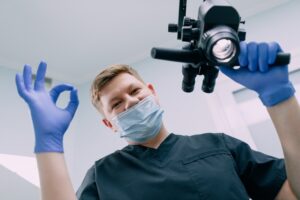 Oral surgery has come a long way since the days of extracting teeth with rudimentary tools and limited techniques. Today, there are a wide variety of innovative procedures and techniques that enhance the precision, speed, and comfort of oral surgery procedures. These advancements have allowed dentists and oral surgeons to perform procedures that were once deemed impossible or impractical, revolutionizing the way that we approach oral care. If you’re curious about the latest advancements in the field of oral surgery, join us as we explore new techniques that are changing the game.
Oral surgery has come a long way since the days of extracting teeth with rudimentary tools and limited techniques. Today, there are a wide variety of innovative procedures and techniques that enhance the precision, speed, and comfort of oral surgery procedures. These advancements have allowed dentists and oral surgeons to perform procedures that were once deemed impossible or impractical, revolutionizing the way that we approach oral care. If you’re curious about the latest advancements in the field of oral surgery, join us as we explore new techniques that are changing the game.
Laser Dentistry
Laser dentistry is an innovative technique that is quickly becoming a popular choice for many patients. Compared to traditional drills, lasers are quieter, cause less pain and discomfort, and promote faster healing times. Additionally, laser dentistry lowers the risk of infection and bleeding since it sterilizes the area that it treats. This procedure is commonly used for gum disease treatment, soft tissue surgery, and teeth whitening. Indeed, the benefits of laser dentistry are numerous; however, only a highly experienced, trained, and certified dentist or oral surgeon can use this technology.
Virtual Surgical Planning
Virtual surgical planning is a technique that uses computer imaging to create an accurate and efficient plan for oral surgery procedures. Before the procedure, a dentist or oral surgeon uses a computer program to insert data from a CT scan of the patient’s mouth and teeth. This process involves calculating the approach of the procedure while incorporating the health and structure of the patient’s mouth in making the best surgical plan. As a result, virtual surgical planning allows for more efficient procedures, minimizes the risk of complications, and reduces the length of time a patient must wait before their procedure.
3D Printing
3D printing has become increasingly popular in the oral surgery industry in recent years. Dentists and oral surgeons can use 3D printers to create accurate models for assessing a patient’s dental health. These models can show the patient what their mouth will look like after the procedure, making it easier to make informed decisions. In many cases, the use of a 3D printer can eliminate inaccuracies that could lead to complications during surgery. For instance, dentists or oral surgeons can practice beforehand using 3D-printed models, where they can study the different angles of the surgical process, identify possible complications, and provide solutions accordingly.
Platelet-Rich Plasma Therapy
Platelet-rich plasma (PRP) therapy involves using the patient’s blood platelets to stimulate the growth of new tissue, promote healing of wounds, and reduce inflammation. A small amount of blood is drawn from the patient, and the platelets are separated and collected and processed to yield Platelet-rich plasma, which is then used in the oral surgery procedure. By promoting the production of platelets in the tissue, PRP reduces the risks of bleeding, hematoma formation and improves wound healing.
All in all, the advancements in oral surgery techniques have come a long way. Laser dentistry, virtual surgical planning, 3D printing, and Platelet-rich plasma therapy have revolutionized the way dentists and oral surgeons perform oral surgery. The use of these technologies has led to more efficient procedures, better outcomes, and more comfortable experiences. Thus, these advancements in the field of oral surgery have improved the quality of life for patients and are making a significant impact in the healthcare industry. If you’re interested in exploring the latest oral surgery techniques, be sure to consult with your dentist or oral surgeon to discuss which options may be best for you.
